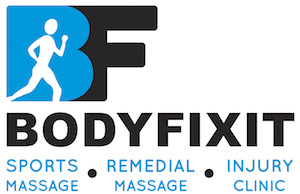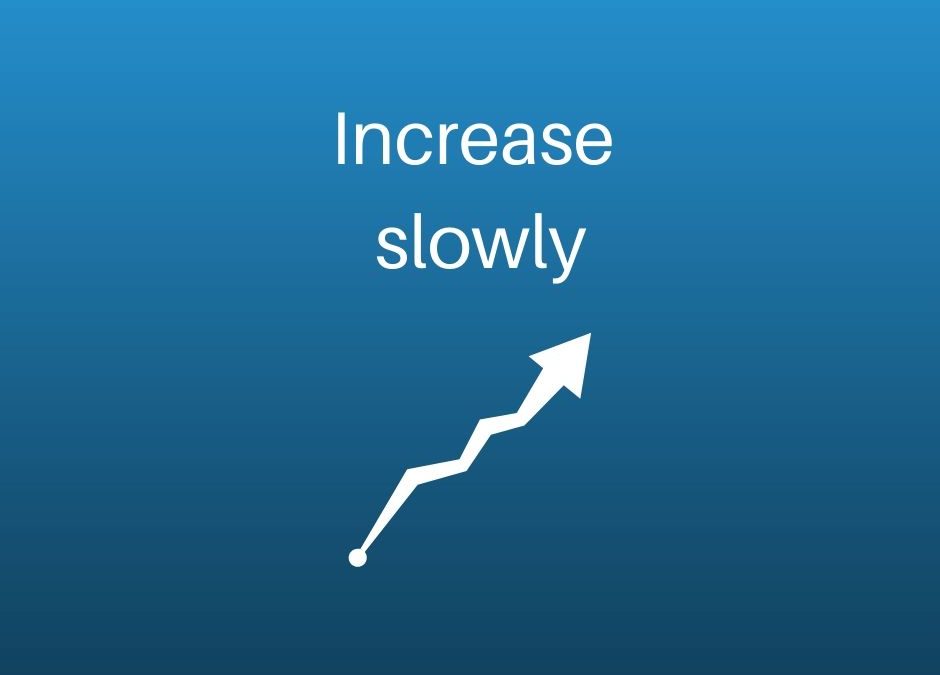Want to start getting fit and healthy or do more exercise during lockdown but don’t want to worry about muscle aches, stiffness and injury throughout the coronavirus situation?
Well don’t worry because here are our simple tips to help you do just that!
As I said in the video firstly excuse the hair and sweatiness, I had just been out on a bike ride and I felt inspired to do a really quick video on how you can get healthier, fitter during this coronavirus period without injury, aches, and pains, and stiffness.
I am hearing from a lot of people who are thinking about doing more exercise or have already started doing more exercise, which is great. They have either decided to start something new or have increased their distance. However they are either noticing more muscle aches, tension or soreness or picking up an injury which is stopping them from doing their exercise, which we know can be frustrating.
So I wanted to do was give you four simple things to think about when you’re trying to get fitter and healthier, which you can do to try and reduce your risk of getting injuries, and aches, and pains, and stiffness . It is especially important that these muscle aches and pains don’t become a full-blown injury because right now we can’t treat you hands-on. We can give you advice and we can give you tips and things to try and help, but we can’t physically help you.
Tip number 1 – increase slowly!
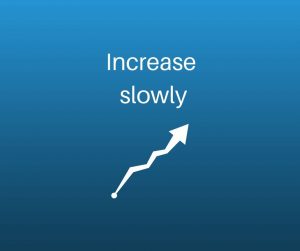
increase slowly
Increasing slowly is really important. I love that people have decided to get fitter and healthier and use the time to do that, but think about how you’re going to do it. Create a plan.
If you are going to start running, try a Couch to 5K plan. It’s a set plan, you can follow it, so you’re not overdoing it too quickly.
If you are cycling, follow a similar plan. You start from nothing and you build up gradually.
If you are swimming and you are lucky enough to have a pool, build it up gradually.
If you were already doing an sport or you switched to a different sport, build it up slowly.
If you used to do a particular sport like running or cycling i.e. you used to run a 10K without problems but haven’t done it for a little while, build it up slowly.
Or, if you a 10K and then you suddenly decide to do a 20K,” that’s a big step up. Build it up slowly.
Your body needs time to build up to that distance, strengthen it and work on your cardiovascular system, so it’s able to support you. Build it up slowly.
Tip number 2 – equipment!
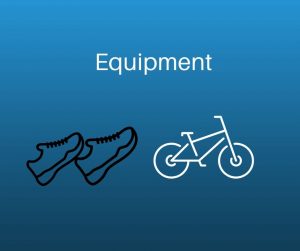
equipment
It is all about equipment, which sounds very vague hopefully we can clarify.
Whether you are going to run or even just get walking, make sure you’ve got a really good pair of shoes, they’re supportive and not really old. It is important that you haven’t done a lot of mileage in them because you need to look after your feet, which looks after your knees, your hips, your lower back, and the rest of the joints in the body. So don’t underestimate your shoes! You could buy a same pair that you already have online, so you don’t have to go in and get looked at on a treadmill or anything like that.
I’m seeing a lot of people out on a bike when I’m out cycling which is great but when you look at their knees when they’re peddling, rather than their knees being straight and inline with their feet they are coming out to the side. This suggests that maybe the saddle needs raising. If you are peddling and you stop mid-pedal look at your bent knee, can you see your toe? If you can’t see your toe, your knee’s too far forward which suggest you might need to move the saddle back a bit.
The thing with a bike set-up is millimetres make a big difference. What I really don’t want to see is lots of knee issues because people have been cycling during lockdown and their bike isn’t set up correctly. If you haven’t had a bike set up in a bike shop then I recommend you research how you could improve the bike set up yourself so that you’re going to have less injuries.
If you have just got a pool in the garden, build the distance slowly because you’ve actually added a resistance band to help you stay in one place. This means addtional effort to where you used to swim in the pool, build up the mileage slowly
Tip number 3 – water!
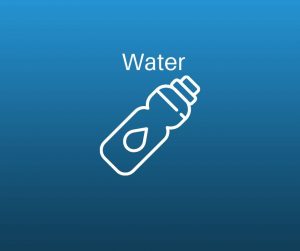 Is all about water.
Is all about water.
Make sure you take water ideally when you are exercising but definitely be prepared beforehand by being hydrated and afterwards.
Electrolytes are also very important within hydration levels as the right levels are need for many functions including muscle contraction and recovery. Really important particularly as it gets warmer, or if you’ve had a stomach bug. I like to have it in my water (a no sugar variety) which regulates sodium, potassium and magnesium.
A lot of people get enough sodium in their diet but if we are sweating, you need a little bit more. If you want help with this please just let me know.
Tip number 4 – stretching
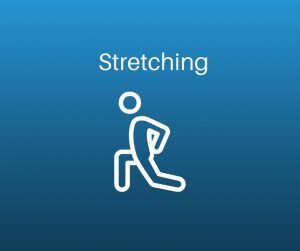
stretching
Last tip is all about stretching.
Now I have decided I am a weird one when it comes to stretching! I think of of stretching as part of my exercise.
A lot of people I speak to say, they go out for a run or whatever your exercise is, walk, run, swim cycle, then they get home, notice they are really hungry so they eat. Then, they have a shower and then the kids need them or this needs doing, and that needs doing, and they don’t stretch. I’m a weird person in that I think of the stretching as part of my exercise. So, if I’m going to go out for 50 minutes, 10 minutes of that is going to be stretching. I do this religiously as I know it reduces the onset of delayed muscle soreness, that thing that makes moving a couple of days later difficult and injury.
So after I exercise I get in, I have some water, and I get on the floor, and I do my stretching. Then I might eat, then I might have a shower and do everything else. So make stretching your priority. Stretch because then you’re not building up that muscle tension, which is then going to potentially lead into an injury. Alongside this be be aware of any muscle stiffness or tightness. For example if you are aware of your right hamstring’s feeling a little tight, ease into it gently and get help with it. We can’t physically hands-on treat you at the moment during the coronavirus period but we can give you advice on how to ease it. Build in your stretching as a part of your exercise.
Taking this one step further if you are trying to be more fit and healthy, think about doing stretching every day. It’s going to help you lengthen those muscles, so you’re not ending up tighter and tighter, and then the muscles go ping. You want to have elastic muscles. I often say to people, you want to imagine your muscles to be like one of those slinkies that used to flop down the stairs. It’s a spring, it’s elastic. You want strength in the muscles and be able to create the power, but you also want that elastic component so it can bounce back. If you’re not stretching, those muscles get tighter and tighter. We can all probably remember when the slinky gets one of those pesky knots in the middle, that’s what’s happening in your muscles if you don’t stretch. Stretching helps to maintain that elastic component, which is going to be really important for you to keep doing your exercise.
So, those are my tips to be able to keep moving, get fit and healthy without aches and pains, without injury, particularly during this coronavirus, but actually just make this a habit now, and then you don’t even have to think about it but also your are less likely to become injured.
Enjoy your exercise. If you need more information or help, let me know
